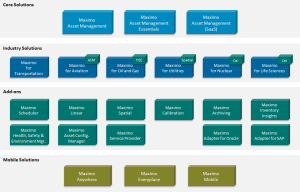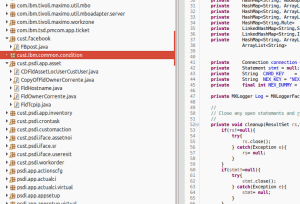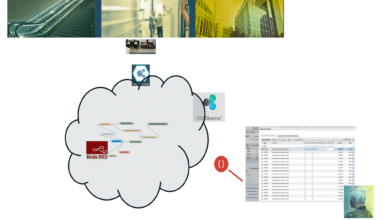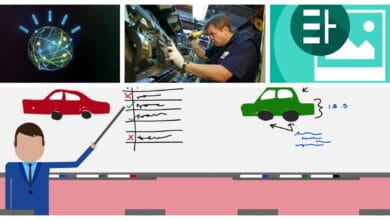
IBM Maximo: Tips for writing great technical review documents
My recent activity on IBM Maximo Asset Management was related to architecture & customization review. So I decide to summarize the key technical points used in my review and to give you some tips about the information to collect in the review document.
Here my key technical points:
1. Architecture hi-level design
2. Middleware configuration
3. Integration with external systems
4. Add-ons and industries solutions
5. Custom applications
6. Custom workflows
7. Custom escalations and cron-tasks
8. Security profiles and data restrictions
9. Java code
10. Automation scripts
11. Trigger and other database stuff
12. Other custom configurations
Writing a technical review document it is useful for an assessment on existing Maximo production environment or before to plan a release upgrade.
1. Architecture hi-level design
In this section you should collect and analyse information about the hi-level architecture design as: application server cluster, traffic balance, resource sizing, configuration parameter, Virtual Machine configuration,, concurrent users, table size, workload forecast and performance estimate.
It’s important in this section to understand how the clusters manage the users traffic, for example how is manage the background traffic produce by integration system. All aspects of this pyramid should be considered and evaluated:

2. Middleware configuration
In this section you should collect and analyse information about:
– Application Server configuration in terms of JVM tuning and thread pool settings.
– HTTP server settings in terms of Time-out, Threads, compression and load balancing.
– Database server configuration in terms of indexes, table-spaces, query optimizations and so on. More aspect may change based on DBMS vendor.
3. Integration with external systems
As many of you know Maximo use the integration framework to data exchange between the system and external applications in real time or batch mode. So you should collect and analyse information about how the integration framework exchange data synchronously and
asynchronously by using a variety of communication protocol between the system and external applications.
Tip for writing a technical review document: It is very rare that Maximo is the only one system in a customer’s environment, usually Maximo is integrated with an LDAP system or it is integrated with a back-end procurement system as SAP. When Maximo is used as Trouble Ticketing system is likely finding integration solutions based on web-services with Remedy or HP-SM. Here a Proof of Concept related to the integration of Maximo with Twitter.
4. Add-ons and industries solutions
In this section you should collect and analyse information about the add-ons and industries solutions installed.

It is very important to understand the add-ons installed especially when your technical review document it’s a prerequisite for a release upgrade activity. Usually any add-ons installed on Maximo could complicate the release upgrade procedure.
5. Custom applications
In this section you should collect and analyse information about the applications customization. For example you should understand which existing applications have been simplified or which applications have been cloned and edited.
Sometime it is possible that existing applications have been enhanced other times the out-of-the-box applications do not meet your business needs, and you need to add information to them adding existing fields to an applications.
In your IBM Maximo technical review documentation you have to put the focus on the new application created to capture customer’s business process.
6. Custom workflows
In this section you should collect and analyse information about the custom workflows. As you know the Maximo Workflow provides a means of electronically reproducing your business processes so that they can be applied to Maximo records. Using Maximo Workflow features let you auto
mate repetitive business processes and record management processes.
Tip for writing a technical review document: you should to review the process task requires a user decision, in terms of rule and in terms of dialogue box. You should put great focus on executable programs (batch file or .exe) run from workflow and on Java classes run from actions.
7. Custom escalations and cron-tasks
In my experience the escalation and the cron-tasks are the most used customization type. Almost any Customers know how to create an escalation and many of them know how to create a cron-task to import a flat file with external data. So you should collect and analyse information about the cron-task and escalation created, it could be very dangerous to have a Maximo with a huge background workload without an architecture designed to support it.
8. Security profiles and data restrictions
In this section you should collect and analyse information about security profiles and data restrictions. These aspects have a great impact on system performance. Sometime the data restrictions may use queries with a huge CPU and memory usage, and sometime the Maximo performance can degraded.
9. Java code
In this section you should collect and analyse information about the Java code used to customize Maximo.

Review the Java code is often an complicated activity, you should spend several days understanding, analyzing, and reverse-engineering the code. My suggestion is to understand how are managed the out-of-the-box tables and how the code implements the custom flows. Moreover you should check if the Java code follow the IBM best practices.
10. Automation scripts
In this section you should collect and analyse information about the automation scripts. The automation scripts is something which is still very new, so it is necessary to manage the scripts carefully as there are few Maximo system that use automation scripts in such an intensive way. Tip for writing a technical review document: you should check all launch points.
11. Trigger and other database stuff
In this section you should collect and analyse information about database triggers and database scripts, procedures and other elements related to database. Maximo customizations have been through several stages, in the beginning of time the most of customizations were made by triggers, in a second phase the database triggers were the devil and many customizations were developed by Java code (MBOs). Currently the scenario is balanced, the best practices suggest to use MBOs but some triggers (cum grano salis) are allowed.
12. Other custom configurations
Anything else not mentioned in previous key technical points should be documented here.
I have been working on Maximo since 8 years and I saw very strange things: Visual Basic nightly procedures moved data from external database to Maximo database, html pages inserted data directly in Maximo database and so on. During a technical review documentation it is very important to understand everything especially the customization unconventional.
So these are my simple tips for writing a technical review document, what are yours ?
Your comments and suggestions are welcome.




Is there any basic code review checklist for Maximo Java customization and Automation scripts ?
Wonderful blog! I found it while searching on Yahoo News. Do you have any suggestions on how to get listed in Yahoo News? I’ve been trying for a while but I never seem to get there! Many thanks
Hello colleagues, its wonderful piece of writing concerning tutoringand completely defined, keep it up all the time.
With havin so much content do you ever run into any issues of plagorism or copyright violation? My blog has a lot of completely unique content I’ve either authored myself or outsourced but it looks like a lot of it is popping it up all over the web without my agreement. Do you know any techniques to help stop content from being ripped off?
I’d genuinely appreciate it.
regard
Hi Richie, the comment system works fine 🙂
Hola, funcionan los comentarios?
I like what you guys tend to be up too. This type of clever work and coverage! Keep up the awesome works guys I’ve incorporated you guys to my blogroll.
Hi there! I could have sworn I’ve been to this website before but after reading through some of the post I realized it’s new to me. Anyways, I’m definitely happy I found it and I’ll be book-marking and checking back often!
Thanks you are very kind 😉
Ahaa, its nice conversation concerning this paragraph at this place at this webpage, I have read all that, so now me also commenting at this place.|
Valuable information. Lucky me I found your web site unintentionally, and I am shocked why this twist of fate didn’t happened in advance! I bookmarked it.|
I do not even know how I ended up here, but I thought this post was good. I do not know who you are but certainly you are going to a famous blogger if you aren’t already 😉 Cheers!|
marinir seo
sure you can !
Hi, can I use this document for my reviews?
Hi marinir, sorry but I am not a wordpress expert just an user.
My coder is trying to convince me to move to .net from PHP. I have always disliked the idea because of the costs. But he’s tryiong none the less. I’ve been using Movable-type on various websites for about a year and am nervous about switching to another platform. I have heard excellent things about blogengine.net. Is there a way I can import all my wordpress content into it? Any help would be greatly appreciated!|
I tested by different browsers and different networks the site seems ok
I don’t know if it’s just me or if everybody else experiencing problems with your site. It appears as if some of the written text within your posts are running off the screen. Can somebody else please comment and let me know if this is happening to them too? This might be a problem with my browser because I’ve had this happen previously. Many thanks|
Thanks
Thank you I really appreciate your support !
Im not that much of a internet reader to be honest but your blogs really nice, keep it up! I’ll go ahead and bookmark your website to come back in the future. Many thanks|
good work !